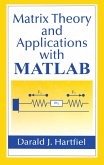The book unifies quantum theory and the general theory of relativity. As an unsolved problem for about 100 years and influencing so many fields, this is probably of some importance to the scientific community. Examples like Higgs field, limit to classical Dirac and Klein-Gordon or Schrödinger cases, quantized Schwarzschild, Kerr, Kerr-Newman objects, and the photon are considered for illustration. An interesting explanation for the asymmetry of matter and antimatter in the early universe was found while quantizing the Schwarzschild metric.
Dieser Download kann aus rechtlichen Gründen nur mit Rechnungsadresse in A, B, BG, CY, CZ, D, DK, EW, E, FIN, F, GR, HR, H, IRL, I, LT, L, LR, M, NL, PL, P, R, S, SLO, SK ausgeliefert werden.









